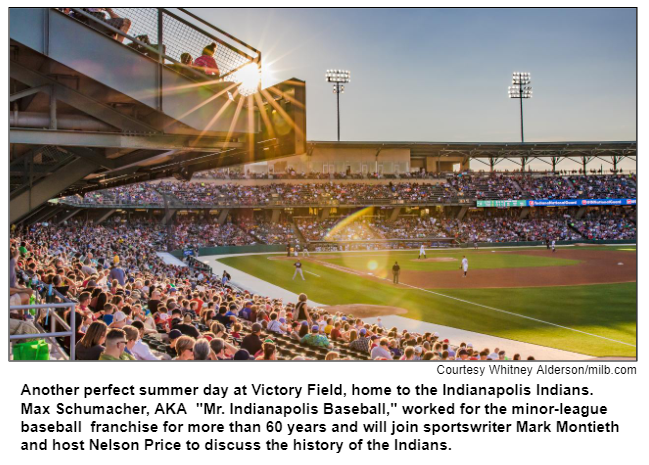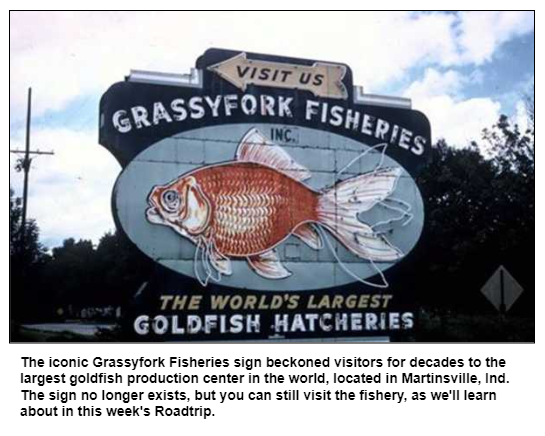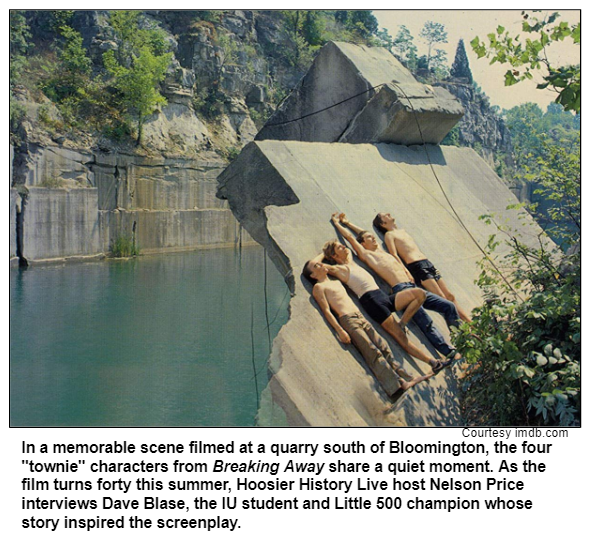
Saturdays, noon to 1 p.m. ET on WICR 88.7 FM.
Or listen live from anywhere on WICR Online!
Our call-in number during the show: (317) 788-3314
August 10, 2019
Indianapolis Indians history with Max Schumacher and Mark Montieth

Not only did he spearhead the effort to build Victory Field in downtown Indy in the mid '90s, he actually began his career by working for Owen Bush, the namesake of historic Bush Stadium, which had been the Indians' home field since 1931.
Now chairman emeritus of the Indians (the franchise is managed by two of his sons), Max has written a book to convey some of the highlights of his long career. In Extra Innings: My Life in Baseball (Blue River Press), Max shares insights about wild promotions, players who passed through the Indians before achieving stardom in the major leagues, and periodic drama in the team's front office.
To explore the mounds of history associated with the Indians - who are currently the Triple-A affiliate of the Pittsburgh Pirates, following years of affiliation with a range of major league teams, including the Cleveland Indians and the Cincinnati Reds - Max will be Nelson's studio guest. So will his Extra Innings co-author, Mark Montieth, the award-winning Indianapolis-based sportswriter.
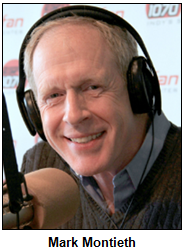 As a student at Shortridge High School, Max attended Indians games with his lifelong friend Richard Lugar (both were members of the class of '50), who wrote the foreword to Extra Innings before he died in April. After Shortridge, Max played baseball at Butler University for another legendary figure: Tony Hinkle, the three-sport coach who became the namesake of Hinkle Fieldhouse.
As a student at Shortridge High School, Max attended Indians games with his lifelong friend Richard Lugar (both were members of the class of '50), who wrote the foreword to Extra Innings before he died in April. After Shortridge, Max played baseball at Butler University for another legendary figure: Tony Hinkle, the three-sport coach who became the namesake of Hinkle Fieldhouse.
Future Hall of Famers who played for the Indians early in their careers included Harmon Killebrew, who was 24 years old in 1958 when, as Max notes in Extra Innings, he had a dismal season in Indy.
If some fans are not aware that Killebrew (who hit more than 570 home runs for the Washington Senators after leaving Indianapolis) ever came up to bat at Bush Stadium, few have forgotten the most popular player in Indians history: charismatic Razor Shines, who spent most of nine seasons with the team during the 1980s and '90s. Invariably introduced over the public address system as "R-r-r-r-r-r-azor Shines," he will be among the notables that Max and Mark will discuss during our show.

- In 1955, the Indians came close to leaving Indianapolis. The team, which was losing money, was affiliated with the Cleveland Indians then. Max and Mark will explain how the team managed to remain in Indy.
- Bush Stadium was nearly slated for demolition after the Indians moved to the newly opened Victory Field at White River State Park in 1996, but then made history by becoming the first former baseball stadium in the country to be converted into residential housing. Historic preservationist John Watson of Core Redevelopment discussed the conversion during a Hoosier History Live show in 2013. Stadium Lofts apartments opened later that year.
- Max Schumacher was named a Living Legend by the Indiana Historical Society in 2012.
Roadtrip: Martinsville - Goldfish Capital of the World
Guest Roadtripper Daina Chamness, author and foodie who now lives embraces the RV lifestyle with her husband Larry and pooch Finn, invites us on a jaunt to historic Grassyfork Fisheries in her hometown of Martinsville, Ind.
A fishery in Martinsville? Who knew?
Well, Martinsville was actually famous in the early 20th century as the "Goldfish Capital of the World," thanks to the entrepreneurship of Eugene Shireman, who started Grassyfork Fisheries in 1899 on a plot of swampy land that he had inherited.As the little gold Carassius auratus, first imported to the US from China just a few years earlier, grew in popularity as an easy-to-care-for pet, so did Grassyfork; the facility eventually became the largest goldfish production center in the world.
Daina tells us that the hatchery is still in operation as a family business producing goldfish and koi, though it now operates under the name Ozark Fisheries Shireman Farm. It has been listed on the National Register of Historic Places and is open for tours.So if you're fishing around for a fun and educational adventure in Indiana history, join Daina and make a splash on this exciting Roadtrip!
History Mystery
For more than 35 years, a touring mascot based in California performed at Indianapolis Indians games, delighting fans with playful antics and joking around with players and umpires on the field. The mascot - an oversized yellow chicken - eventually became known as The Famous Chicken and is credited with popularizing the use of mascots in professional sports. Sporting News even deemed the anthropomorphic bird, who made promotional appearances at events across the country, one of the 100 most powerful people in sports during the 20th century.
As our guests Max Schumacher and Mark Montieth note in their book Extra Innings, The Famous Chicken had a different name when the character began appearing at Indians games and interacting with spectators, particularly children. At the beginning of the mascot's promotional appearances in the 1970s, the chicken's name included the California city where the character originated.
Question: What was the original name of The Famous Chicken?
The call-in number is (317) 788-3314. Please do not call into the show until you hear Nelson pose the question on the air, and please do not try to win the prize if you have won any other prize on WICR during the last two months. You must be willing to give your name and address to our engineer and be willing to be placed on the air.
The prizes this week are a family 4-pack to the Indiana State Museum, courtesy of the Indiana State Museum, and a gift certificate to Story Inn in Brown County, courtesy of Story Inn.
Nelson Price, host and historian
Molly Head, producer/general manager, (317) 927-9101
Michael Armbruster, associate producer
Cheryl Lamb, administrative manager
Richard Sullivan, senior tech consultant
Pam Fraizer, graphic designer
Garry Chilluffo, special events consultant
Please tell our sponsors that you appreciate their support!

 Acknowledgments to Monomedia, Visit Indy, WICR-FM, Fraizer Designs, Heritage Photo & Research Services, Henri Pensis, Aaron Duvall, Chloe Tyson, and many other individuals and organizations. We are independently produced and are self-supporting through organizational sponsorship and through individual contribution at the yellow button on our newsletter or website. For organizational sponsorship, which includes logos, links, and voiced credits in the show, contact Molly Head at (317) 927-9101 or email her at molly@hoosierhistorylive.org. Our media reach continues to grow via podcasting and iTunes.
Acknowledgments to Monomedia, Visit Indy, WICR-FM, Fraizer Designs, Heritage Photo & Research Services, Henri Pensis, Aaron Duvall, Chloe Tyson, and many other individuals and organizations. We are independently produced and are self-supporting through organizational sponsorship and through individual contribution at the yellow button on our newsletter or website. For organizational sponsorship, which includes logos, links, and voiced credits in the show, contact Molly Head at (317) 927-9101 or email her at molly@hoosierhistorylive.org. Our media reach continues to grow via podcasting and iTunes.
Thank you!
We'd like to thank the following recent, new and renewal contributors whose donations help make this show possible!
- Bruce and Julie Buchanan
August 17, 2019 - coming up
Breaking Away at 40 with Dave Blase
If the decades seem to have zipped by with the speed of a competitive cyclist, brace yourselves: The movie Breaking Away, filmed in and around Bloomington, opened in theaters across the country 40 years ago this summer.

Now 79 years old, Dave Blase is retired after a long career as a biology teacher, including 39 years on the faculty of Arlington High School in Indianapolis. Dave Blase will be Nelson's studio guest to share insights about his early life (he grew up in Speedway), the impact of Breaking Away (in which the aria-singing protagonist is named Dave Stoller), and how his life has unfolded during the 40 years since the release of the movie.
"Dave had this fanatical attachment to the sport," Tesich recalled in an interview with Nelson, our host, a few years before the screenwriter's death in 1996. "It was almost a romantic involvement."
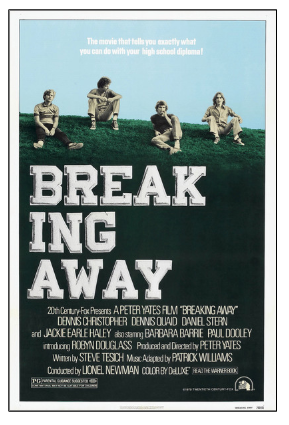
In Breaking Away, the "townie" characters on the scrappy Little 500 team hail from working-class families who cut limestone in the quarries near Bloomington. The team members, who call themselves "Cutters," feud with preppy IU students, competing not only in the Little 500, but also for the attention of sorority members.
In interviews over the years, Dave Blase has said that during his boyhood in Speedway, he had minimal interest in sports, including cycling. That changed at IU, culminating in his spectacular performance in the Little 500 in 1962, in which he rode 139 of the 200 laps and set campus records.
With only a $2.4 million budget - modest even for the time - Breaking Away was filmed in Bloomington and elsewhere in Monroe County during the summer and fall of 1978, then released the next year.
Steve Tesich, the screenwriter, was born in 1942 in what was then Yugoslavia. At age 14, he immigrated with his family to East Chicago, Ind. After winning the Oscar for Breaking Away, Tesich wrote the screenplay for Four Friends (1981), an autobiographical movie about an Eastern European immigrant who comes of age in northwestern Indiana.© 2019 Hoosier History Live. All rights reserved.
|
